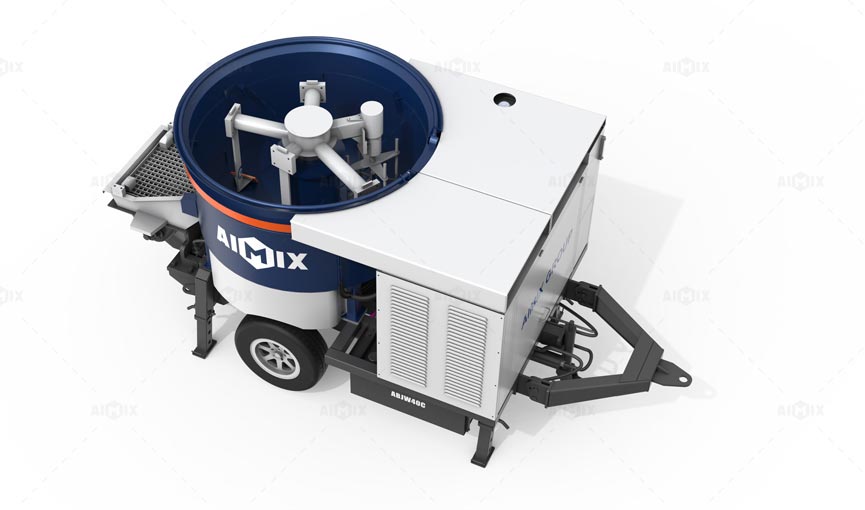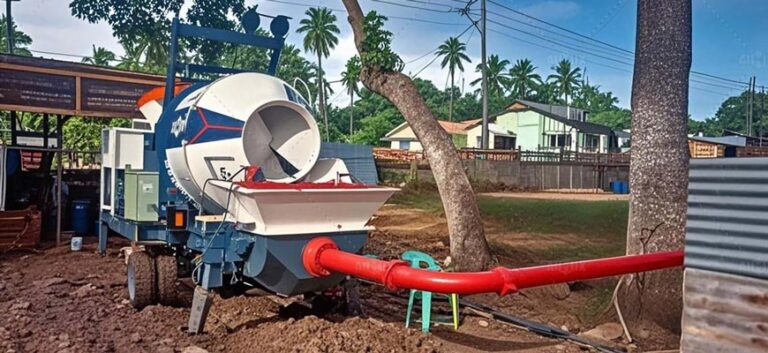Concrete mixer pumps represent a critical junction in construction operations where mixing quality and pumping efficiency must coexist harmoniously. Traditional systems often suffer from performance gaps where either the mixing capability outpaces the pumping capacity or vice versa, creating bottlenecks in continuous operations. These efficiency mismatches lead to material waste, energy inefficiency, and compromised project timelines that affect overall job site productivity.
AIMIX Group has addressed these systemic challenges through engineered solutions that synchronize mixing and pumping functions at fundamental levels. Their technological interventions focus on three key areas: hydraulic system optimization, material flow dynamics, and intelligent control integration. The result is a new generation of concrete mixer pump that maintain consistent output quality while adapting to varying operational demands across different construction scenarios and concrete formulations.

Hydraulic System Synchronization
Dual-Circuit Power Management
AIMIX mixer pumps employ independent hydraulic circuits for mixing and pumping functions that share a common power source without competing for resources. This configuration eliminates the power fluctuations that plague single-circuit systems when both functions operate simultaneously. The segregated circuits maintain consistent pressure and flow rates regardless of whether the portable concrete pump and mixer is mixing, pumping, or performing both operations concurrently.
Load-Sensitive Pressure Compensation
The incorporation of proportional pressure-compensated valves allows real-time adjustment of hydraulic flow based on immediate demand. When pumping resistance increases due to longer pipelines or vertical lifts, the system automatically redistributes power without sacrificing mixing performance. This dynamic balancing ensures neither function becomes the limiting factor during operation.

Material Flow Optimization
Auger Geometry Innovations
AIMIX has redesigned mixer auger profiles to achieve non-linear material progression that matches pumping cycles. The variable-pitch helices accelerate mixing at the intake zone while providing controlled discharge timing that synchronizes with pump strokes. This geometric optimization prevents the pulsing effect common in conventional designs where mixed concrete arrives at the pump chamber in inconsistent batches.
Chamber Transition Engineering
The transition zone between mixer and pump receives particular attention in AIMIX designs. A patented tapered transfer chamber with controlled baffling eliminates material segregation during the handoff between mixing and pumping functions. The chamber’s volumetric capacity precisely matches the pump’s displacement requirements, creating a buffer that maintains continuous flow without backpressure interference.
Intelligent Control Integration
Adaptive Cycle Timing
Embedded sensors monitor both mixing consistency and pumping resistance, feeding data to an algorithmic control unit that adjusts operational parameters in real-time. When the system detects changes in concrete viscosity or pumping distance, it automatically modifies mixing speed and pump stroke timing to maintain optimal throughput. This closed-loop adjustment occurs without operator intervention, responding to conditions that would require manual recalibration in conventional systems.
Predictive Performance Mapping
AIMIX units incorporate machine learning capabilities that analyze historical performance data to anticipate efficiency drops before they occur. The system can recognize patterns indicating wear in mixing blades or pump seals, automatically compensating through parameter adjustments while flagging maintenance requirements. This predictive capability extends component life while preventing unexpected downtime due to gradual performance degradation.
The integration of these technological advancements in AIMIX concrete pumps represents a significant leap forward in construction equipment efficiency. By fundamentally addressing the root causes of mixing-pumping mismatches rather than simply mitigating their symptoms, these systems deliver measurable improvements in energy consumption, material consistency, and operational reliability. As construction projects grow more complex and schedules more demanding, such synchronized performance becomes not just advantageous but essential for competitive operation in modern concrete construction.
